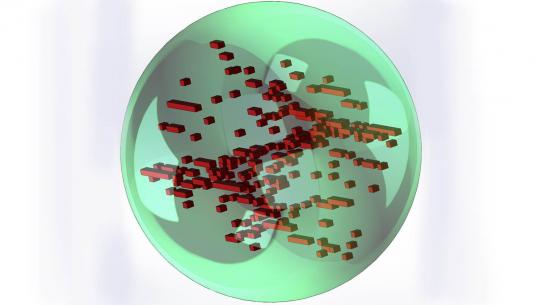Tandon Researcher Co-Authors One of 2018’s Top Papers on 3D Printing

In an article in Advanced Engineering Materials, Nikhil Gupta, an associate professor of mechanical engineering, and collaborators exploited the layer-by-layer AM printing process to “explode” QR codes within computer-assisted design (CAD) files so that they present several false faces — dummy QR tags — to a micro-CT scanner or other scanning device.
With the worldwide market for 3D-printed parts now a $5 billion business, interest in the field is booming among members of industry, academia, and even the general public. One of the major sectors vying to remain on the cutting edge of additive manufacturing (AM), as 3D printing is also known, is aerospace, and as the editors of the news organization 3DPrint.com wrote, “It would take a very long time to list all of the amazing news in aerospace 3D printing in 2018.” Still, they compiled a list of the 10 most exciting developments of the year, and prominent among them was research conducted by Nikhil Gupta, an associate professor of mechanical engineering at NYU Tandon, who along with his colleagues discovered a way to prove the provenance of a 3D-printed part by employing QR (Quick Response) codes in an innovative way for unique device identification.
The paper — co-authored by Fei Chen, a doctoral student under Gupta; and joint NYU Tandon and NYU Abu Dhabi researchers Nektarios Tsoutsos, Michail Maniatakos and Khaled Shahin — was published in the journal Advanced Engineering Materials and details how the group exploited the layer-by-layer AM printing process to turn QR codes into a game of 3D chess. Gupta’s team developed a scheme that “explodes” a QR code within a computer-assisted design (CAD) file so that it presents several false faces — dummy QR tags — to a micro-CT scanner or other scanning device. Only a trusted printer or end user would know the correct head-on orientation for the scanner to capture the legitimate QR code image.
With the possibility that flawed parts printed from stolen design files could produce dire results, the research has enormous potential to significantly reduce that risk and improve safety. 3DPrint.com pointed out just why Gupta’s research is so vital: they cite that by 2021, 75% of all new commercial and military aircraft will contain 3D printed parts.





